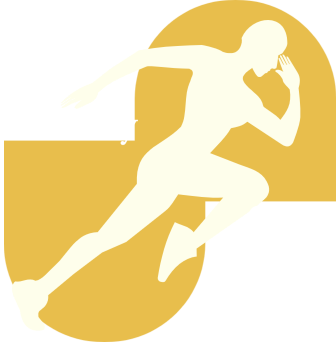Foundational Concepts
- Hope: Other people who have experienced substance abuse have gone on to reach their goals
- Personal Responsibility: It is your action that will keep you well, which includes finding assistance
- Education: The more you learn about what you are experiencing the more enabled you will be to make good decisions
- Self-Advocacy: Get what you need, want, and deserve by actively reaching out to others
- Support: This is a two-way street for life improvement. You won’t truly feel better if you are not giving support to those that support you
Physical Exercise: Essential for everyone
- Relapse has been shown to be less likely if the body is getting exercise
- Drinking water throughout the day and avoiding heavy meals before workouts keeps energy high
- Set goals to build up endurance and strength, increase workouts a little bit each day
- Most gyms will have personal trainers that can help build workouts day by day
- Make a playlist to get pumped up for your exercise
- Always make time to stretch and take breaks when you really need them
- Keep yourself accountable by telling friends and family about your exercise goals
Holistic Therapies
Treatment centers, behavioral therapy, and support groups have long been central to the recovery process. Today, those proven treatments are increasingly being paired with holistic therapies designed to address every aspect of life that’s been affected by substance abuse. But what are holistic therapies and how do they work?
Simply put, holistic therapies are non-medicinal treatments designed to heal the whole person. They address not just the illness, but also the underlying causes of substance abuse. When people in recovery tend to emotional and physical health as part of their recovery, they develop the tools to build a healthier future. There are a number of holistic therapies that can be found in treatment centers across the country. Here, we cover the most popular ones:
- Meditation trains the mind to be more aware, present, and calm. When you’re battling with cravings and negative thoughts in recovery, knowing how to clear your mind is an invaluable tool. And since meditating is free, easy, and convenient, it’s a great strategy to have for quelling urges that catch you by surprise. There are a number of meditation techniques, from breathing exercises to mantra meditation. Experiment to find the techniques that work for you.
- Art therapy is an activity-based therapy that’s proven effective in increasing patients’ self-esteem and positive feelings. It can combat depression and anxiety, major drivers of addictive behavior, and reduce perception of pain and illness. Participants may paint, draw, sculpt, or craft as a way to explore and resolve complicated emotions.
- Yoga combines meditation and exercise into a single practice for an incredibly healing experience. When people in recovery learn how to breathe, balance, and stretch all at once, they’re also learning how to quiet their anxieties and tune into what their body is telling them. Often in recovery, that message is a demand for the physical healing that exercise like yoga can provide.
- Nutrition Therapy: Exercise alone can’t heal the body. To truly get one’s health back on track in recovery, people in recovery need to reform their eating habits. That’s where nutrition therapy comes into play. Nutrition therapy helps people avoid junk food during recovery, guiding them instead towards nutrient-dense foods that will repair deficiencies caused by substance abuse.
- Acupuncture has been rising in popularity as a method for helping those in recovery reduce cravings. One method in particular, known as auricular acupuncture or Acu-Detox, treats opiate withdrawal by applying needles to the ear. While there are varying theories on how acupuncture works, it’s understood to be an effective, safe, and inexpensive way to cope with cravings.
- Horticultural Therapy (Gardening): Much like recovery, tending to a garden requires patience. Plants start out fragile and small, but grow beautiful and resilient with the passing seasons. But gardening is more than a metaphor for recovery: Gardening is a proven method for reducing anxiety, improving moods, and instilling a sense of purpose. It even improves focus and concentration, important faculties to have for a successful recovery.
- Neurofeedback uses sensors that are attached to the head to detect brain activity. The resulting images can be used to identify areas of unwanted activity, such as anxiety or drug and alcohol cravings. From there, the brain can be trained out of those patterns and into healthier ones, building new neural pathways that overwrite addictive habits.
- Medical hypnosis varies from the theatrical stage variety in that it is used to impress powerful instructions directly into your subconscious mind. It can help eliminate your need for harmful substances and improve your self-esteem.
Why are holistic therapies effective in recovery? It’s not about choosing one practice over the other, it’s about cultivating a healthy, strong mind and body so you’re equipped for all the challenges of life in recovery. Because recovering isn’t just about quitting — it’s about building a better you.
Wellness Tools
The main idea is to try as many wellness tools as you can and make your own wellness toolbox. Here are some more wellness tools to consider:
- Listen to relaxing music
- Listen to positive affirmations
- Schedule social outings (coffee, movie, comedy club, etc)
- Keep a journal
- Play with your pets
- Take breaks and appreciate nature
